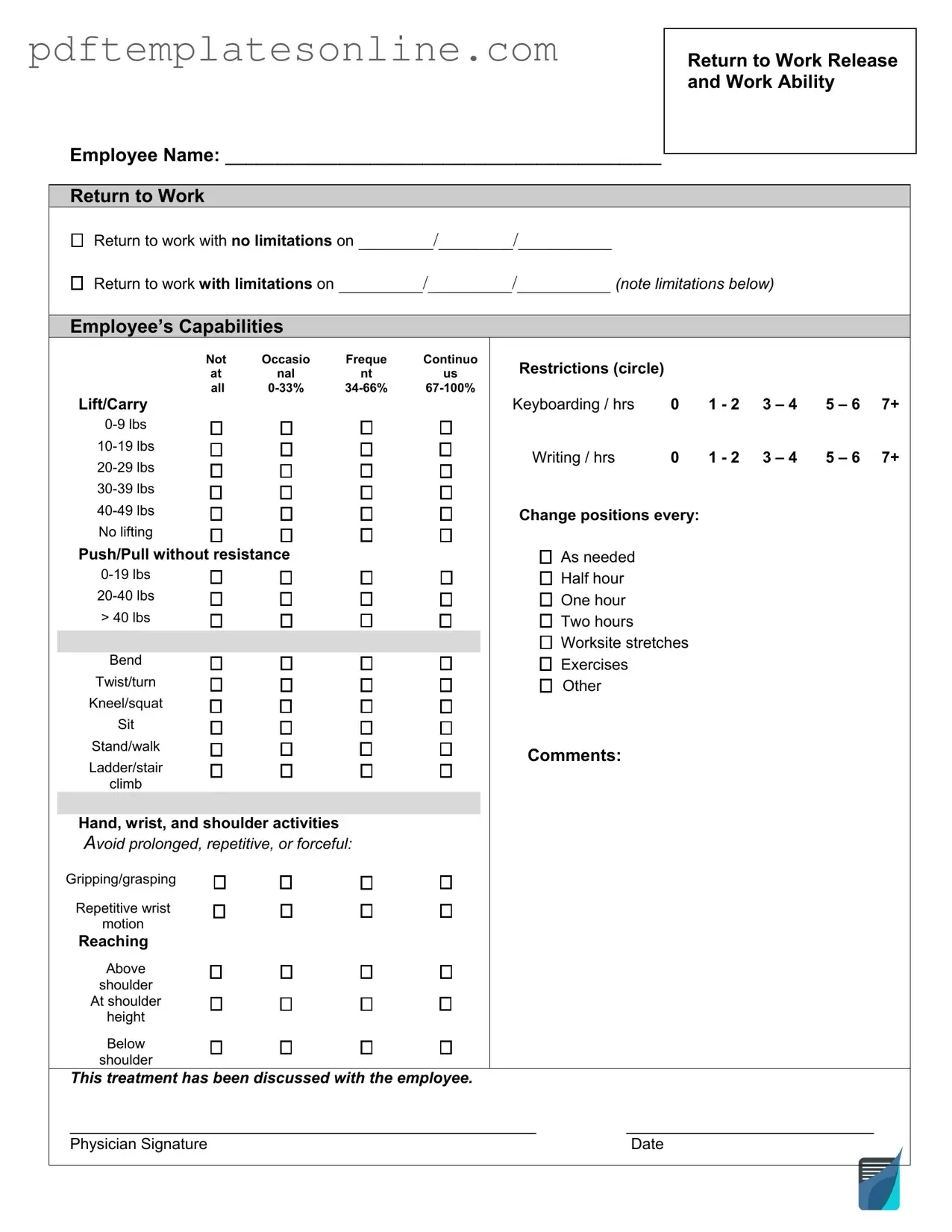Filling out a Work Release form can seem straightforward, but many individuals make common mistakes that can lead to delays or complications. One frequent error is providing incomplete information. When sections are left blank, it can create confusion and may require additional follow-up, which can slow down the process.
Another mistake is failing to sign or date the form. A signature is often essential to validate the information provided. Without it, the form may be considered invalid, and the request for work release could be denied.
Some people overlook the importance of accuracy in the details they provide. For instance, entering the wrong dates or incorrect job titles can lead to misunderstandings. It is crucial to double-check all information before submission.
Additionally, individuals sometimes forget to include necessary supporting documents. If the form requires additional paperwork, such as a doctor’s note or proof of employment, omitting these can delay approval. Always ensure that all required documents are attached.
Another common issue is not following the specific instructions for the form. Each Work Release form may have unique requirements, and failing to adhere to them can result in rejection. Reading the instructions carefully is essential.
Some individuals may also neglect to keep a copy of the completed form for their records. This can be problematic if there are questions or if a follow-up is necessary. Keeping a copy ensures that you have a reference point.
In some cases, people submit the form late. Timeliness is often a critical factor in obtaining a work release. Submitting the form as soon as possible can help avoid any unnecessary delays.
Another mistake is not communicating effectively with the employer or the relevant authority. If there are any questions or uncertainties about the form, it’s best to ask for clarification rather than guess. Clear communication can prevent errors.
Lastly, failing to review the completed form before submission can lead to mistakes. Taking a moment to go over the entire form can catch errors that might otherwise go unnoticed. A thorough review can save time and hassle later on.
